D&D 4th Edition, pre-release
The announcement of the coming of 4th edition Dungeons & Dragons was made many months ago, but I avoided reading any of the speculation about what it would be like. Now that it’s just a few weeks away from public release (June 7), I’ve started looking into some of the teaser information Wizards of the Coast (WotC, the game publisher) has been letting out.
There’ve been a lot of snippets and excerpts from the rulebooks on the WotC Web site, and I’ve read some of them. I’ve also read reviews and play descriptions from some play testers. In general, based on this information, I’m just not at all interested in this new edition of the game. None of the information I’ve seen so far has made me happy.
Unfortunately, most of what I’ve read so far about the new edition has actually turned me off. This new version seems to be going in a wholly different direction than what I want for my D&D game. This saddens me.
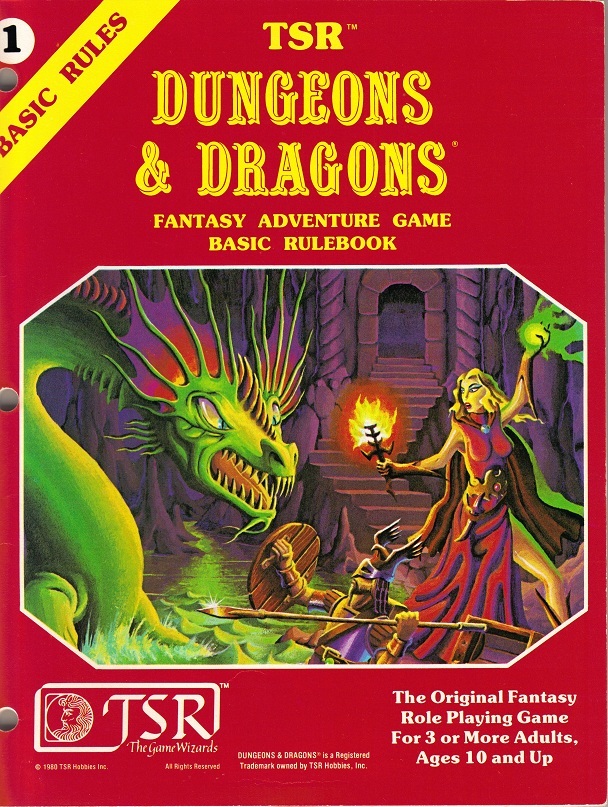
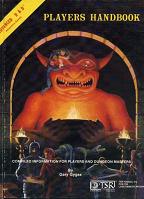 Back in the very early 80s, I started with Basic D&D. After a year or two, my friends and I all moved up to Advanced D&D. This was a natural progression, one planned and intended by designers. Although the name implies that AD&D was just an expanded and more detailed version of BD&D, it was in fact a very different thing. The two versions were easily recognizable as two flavors of the same game, but they were notably different in many ways.
Back in the very early 80s, I started with Basic D&D. After a year or two, my friends and I all moved up to Advanced D&D. This was a natural progression, one planned and intended by designers. Although the name implies that AD&D was just an expanded and more detailed version of BD&D, it was in fact a very different thing. The two versions were easily recognizable as two flavors of the same game, but they were notably different in many ways.
AD&D was the game that became the best known, and often the only known role playing game, for good or bad. Many, and possibly even most teenage boys in the 80s either played this game at least once or knew someone who played this game. (Even my rock star brother played it a few times.)
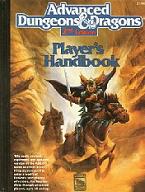 When the second edition of AD&D came out in 1989, I bought and read the books immediately. Unfortunately, I found the slight difference unnecessary. In my opinion, they didn’t fix the things that needed fixing, and they changed things that didn’t need alteration. I stuck with playing the original AD&D. But by the end of the 90s, I had pretty much dropped the game. This was not really because of the game itself, but more because my life had just changed — mostly because of relocation.
When the second edition of AD&D came out in 1989, I bought and read the books immediately. Unfortunately, I found the slight difference unnecessary. In my opinion, they didn’t fix the things that needed fixing, and they changed things that didn’t need alteration. I stuck with playing the original AD&D. But by the end of the 90s, I had pretty much dropped the game. This was not really because of the game itself, but more because my life had just changed — mostly because of relocation.
Then third edition D&D (they dropped the “Advanced” part of the name, but it was obviously a continuation of that version of the brand) was announced. I was wanting to get back into Dungeons & Dragons, but the old version of the game was very dated. The old mechanics of the game were not easy or elegant, or even sensible in some ways, compared to more recent role playing game rules systems. Third edition D&D looked like it was going to be very interesting, judging from the pre-release information being talked about.
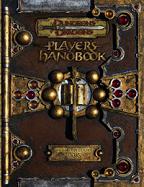 I got back into D&D with that newest edition, and the game was similar enough to the old play that it felt the same in spirit to me, but the new rules mechanics were more streamlined and intuitive. I fell in love with D&D all over again. I’ve played this third edition of the game, and the mild and necessary revision that cleaned up some things, for several years now. In general, the style is very similar to the old style that I started with. It’s what I want in a fantasy role playing game.
I got back into D&D with that newest edition, and the game was similar enough to the old play that it felt the same in spirit to me, but the new rules mechanics were more streamlined and intuitive. I fell in love with D&D all over again. I’ve played this third edition of the game, and the mild and necessary revision that cleaned up some things, for several years now. In general, the style is very similar to the old style that I started with. It’s what I want in a fantasy role playing game.
But what I’m seeing in this new edition is a drastic change from that style that I like. I absolutely do not begrudge WotC updating the game with a new edition. I’ve stated this in a previous post. They should and must update the game to keep up with not only the latest advancements in game play mechanics, but also to keep the game looking and feeling fresh for new generations of gamers.
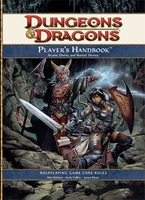 And that’s just it. It seems that the game is evolving beyond my style. The original game was designed not for a particular generation or style — it just was what it was. There was no real competition at the time. Third edition seemed to be designed for the original players “all grown up.” But now the game is being designed for the next generation. And unfortunately, yet quite frankly, it seems that I’m no longer in the latest D&D’s target demographic.
And that’s just it. It seems that the game is evolving beyond my style. The original game was designed not for a particular generation or style — it just was what it was. There was no real competition at the time. Third edition seemed to be designed for the original players “all grown up.” But now the game is being designed for the next generation. And unfortunately, yet quite frankly, it seems that I’m no longer in the latest D&D’s target demographic.
It kind of saddens me in a way, but it’s just basic evolution. I’ll buy the main rule book, so I can read it and make my mind up based on the full material (rather than on just pieces of the material released as teasers). But I’m not going into this reading with the excitement that I had when going into third edition D&D. Then, every little teaser had me interested to learn more. Now every little teaser has actually repulsed me from learning more.
Even if I don’t join the ranks of D&D4 players, I still have all my D&D3 books and materials, so I can continue to play the edition of the game I prefer and love. I’ll hold no ill will for WotC for this new edition — I’ll even applaud them if the brand as a whole continues to thrive and grow. It’s always better that something like Dungeons & Dragons should grow from change than for it to stagnate and die from obsolescence. But it’s looking like it may be growing without me.
Although, my final thought and decision will only come after actually reading the full book.
Bullgrit
bullgrit@totalbullgrit.com






 Categories:
Categories: 


 He was a life-long gamer — a player of
He was a life-long gamer — a player of 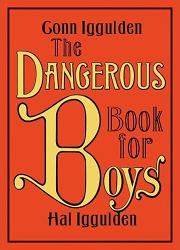 It’s a big book of stuff for boys. How to tie a knot, how to fold a paper airplane, interesting history and stories, and all kinds of stuff that interests and intrigues boys. (Sure, some girls probably like this stuff too.) There’s a ton of various information in this large tome — too much for me to go into for a blog post. I’m just going to talk about one page in the book.
It’s a big book of stuff for boys. How to tie a knot, how to fold a paper airplane, interesting history and stories, and all kinds of stuff that interests and intrigues boys. (Sure, some girls probably like this stuff too.) There’s a ton of various information in this large tome — too much for me to go into for a blog post. I’m just going to talk about one page in the book.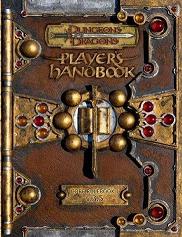 I know it may sound like I’m being pedantic, myself, in making these observations. And maybe I am. But the above items will make no sense to most young boys, or dads, who play or want to play Dungeons & Dragons today. The terms “Basic,” “Advanced,” “thief,” or “magic-user” have not been used in D&D for a couple decades. Why didn’t the authors check out the contemporary version? It’s not like it’s hard to find or pick up.
I know it may sound like I’m being pedantic, myself, in making these observations. And maybe I am. But the above items will make no sense to most young boys, or dads, who play or want to play Dungeons & Dragons today. The terms “Basic,” “Advanced,” “thief,” or “magic-user” have not been used in D&D for a couple decades. Why didn’t the authors check out the contemporary version? It’s not like it’s hard to find or pick up.


